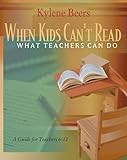When kids can't read, what teachers can do : a guide for teachers, 6-12 / Kylene Beers. [print]
Material type: TextPublication details: Portsmouth, New Hampshire : Heinemann, (c)2003.Description: viii, 392 pages : illustrations ; 23 cmContent type:
TextPublication details: Portsmouth, New Hampshire : Heinemann, (c)2003.Description: viii, 392 pages : illustrations ; 23 cmContent type: - text
- unmediated
- volume
- 9780867095197
- LB1050.B415.W446 2003
- LB1050
- COPYRIGHT NOT covered - Click this link to request copyright permission:
| Item type | Current library | Collection | Call number | Status | Date due | Barcode | |
|---|---|---|---|---|---|---|---|
 Circulating Book (checkout times vary with patron status)
Circulating Book (checkout times vary with patron status)
|
G. Allen Fleece Library CIRCULATING COLLECTION | Non-fiction | LB1050.5.B45 2003 (Browse shelf(Opens below)) | Available | 31923001729983 | ||
 Circulating Book (checkout times vary with patron status)
Circulating Book (checkout times vary with patron status)
|
G. Allen Fleece Library CIRCULATING COLLECTION | Non-fiction | LB1050.5 .B45 2003 (Browse shelf(Opens below)) | Available | 31923001115613 |
A defining moment -- Creating independent readers -- Assessing dependent readers' needs -- Explicit instruction in comprehension -- Learning to make an inference -- Frontloading meaning: pre-reading strategies -- Constructing meaning: during-reading strategies -- Extending meaning: after-reading strategies -- Vocabulary: figuring out what words mean -- Fluency and automaticity -- Word recognition: what's after "sound it out?" -- Spelling: from word lists to how words work -- Creating the confidence to respond -- Finding the right book -- A final letter to George -- Appendices : A. Coding of Kate's first time teaching "eleven" ; B. Transcript of Kate's think-aloud for "eleven" ; C. Bookmark templates ; D. Common roots, prefixes, and suffixes ; E. More roots ; F. Templates ; G. Fry and Dolch word lists ; Common phonics generalizations ; 175 most common syllables in the 5,000 most frequent English words ; J. Interesting sorts ; K. Easily confused words ; L. Common spelling rules ; M. Booklists ; N. Poem for tea party.
For Kylene Beers, the question of what to do when kids can't read surfaced in 1979 when she met and began teaching a boy named George. When George's parents asked her to explain why he couldn't read and how she could help, Beers, a secondary certified English teacher with no background in reading, realized she had little to offer. That moment sent her on a twenty-three-year search for answers to the question: How do we help middle and high schoolers who can't read? Now, she shares what she has learned and shows teachers how to help struggling readers with comprehension, vocabulary, fluency, word recognition, and motivation. Filled with student transcripts, detailed strategies, reproducible material, and extensive booklists, Beers' guide to teaching reading both instructs and inspires.
COPYRIGHT NOT covered - Click this link to request copyright permission:
There are no comments on this title.
